TheLostSwede
News Editor
- Joined
- Nov 11, 2004
- Messages
- 18,854 (2.50/day)
- Location
- Sweden
| System Name | Overlord Mk MLI |
|---|---|
| Processor | AMD Ryzen 7 7800X3D |
| Motherboard | Gigabyte X670E Aorus Master |
| Cooling | Noctua NH-D15 SE with offsets |
| Memory | 32GB Team T-Create Expert DDR5 6000 MHz @ CL30-34-34-68 |
| Video Card(s) | Gainward GeForce RTX 4080 Phantom GS |
| Storage | 1TB Solidigm P44 Pro, 2 TB Corsair MP600 Pro, 2TB Kingston KC3000 |
| Display(s) | Acer XV272K LVbmiipruzx 4K@160Hz |
| Case | Fractal Design Torrent Compact |
| Audio Device(s) | Corsair Virtuoso SE |
| Power Supply | be quiet! Pure Power 12 M 850 W |
| Mouse | Logitech G502 Lightspeed |
| Keyboard | Corsair K70 Max |
| Software | Windows 10 Pro |
| Benchmark Scores | https://valid.x86.fr/yfsd9w |
ASUS' upcoming Z690 motherboards have been revealed and the company has put its product pages as well as posted additional details of most of its upcoming boards, which gives us a good look at where they're heading with the Z690-series. As mentioned before, ASUS has something like 30 different SKUs, so expect to spend some time to go over all the different models.
We're not going to spend too much time on the details right now and we suggest you head over to the source links and read up on the nitty gritty bits there. A few things to point out though is that ASUS appears to have worked on its own memory overclocking standard called AEMP, which is said to handle memory that lacks XMP profiles, which implies that Intel might not have had time to work with memory manufacturers to get XMP ready for DDR5. ASUS' ROG Maximus and ProArt motherboards feature dual PCIe 5.0 slots, whereas all other models only feature one, albeit obviously a single x16 or dual x8 slots. Some boards will feature Thunderbolt 4 and ASUS has even put a front connector on some of those, although we're not sure how that will work in terms of case compatibility.
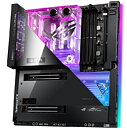


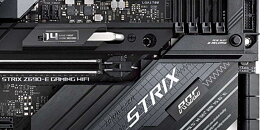
Some models also feature what ASUS calls a Q-Release button, which makes it easier to release the graphics card latch with the help of a button at the front of the motherboard that is connected to a wire that pulls the latch down. ASUS also points out that despite the fact that they've added LGA-115x/1200 mounting holes for coolers, in addition to the LGA-1700 mounting holes, not all coolers will be compatible with the previous generation mounting holes due to the lower height of the socket. Finally ASUS is throwing in a free month of Adobe Creative Cloud with some of its motherboards, oddly enough not the ProArt, but rather its ROG boards.










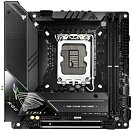
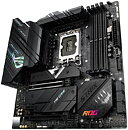

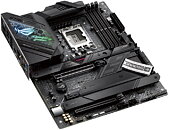

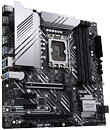
View at TechPowerUp Main Site
We're not going to spend too much time on the details right now and we suggest you head over to the source links and read up on the nitty gritty bits there. A few things to point out though is that ASUS appears to have worked on its own memory overclocking standard called AEMP, which is said to handle memory that lacks XMP profiles, which implies that Intel might not have had time to work with memory manufacturers to get XMP ready for DDR5. ASUS' ROG Maximus and ProArt motherboards feature dual PCIe 5.0 slots, whereas all other models only feature one, albeit obviously a single x16 or dual x8 slots. Some boards will feature Thunderbolt 4 and ASUS has even put a front connector on some of those, although we're not sure how that will work in terms of case compatibility.




Some models also feature what ASUS calls a Q-Release button, which makes it easier to release the graphics card latch with the help of a button at the front of the motherboard that is connected to a wire that pulls the latch down. ASUS also points out that despite the fact that they've added LGA-115x/1200 mounting holes for coolers, in addition to the LGA-1700 mounting holes, not all coolers will be compatible with the previous generation mounting holes due to the lower height of the socket. Finally ASUS is throwing in a free month of Adobe Creative Cloud with some of its motherboards, oddly enough not the ProArt, but rather its ROG boards.
















View at TechPowerUp Main Site






